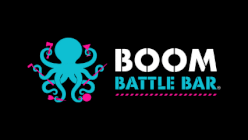In case you missed it see what’s in this section
Let's Talk
Who Needs an Electrical Installation Condition Report (EICR)?
All homes in the UK must be marked as electrically safe for habitation in an up-to-date Electrical Installation Condition Report (EICR). Therefore, the responsibility falls on all homeowners and caretakers in the UK to maintain a legally compliant and up-to-date EICR report that certifies their property as safe from electrical hazards.
Commercial landlords are also homeowners, and as such, it is the landlord’s responsibility to both ensure and maintain a safe living environment for their occupants. An EICR check must be arranged by caretakers who have a legal obligation to carry out maintenance duties on behalf of the owners. However, the EICR check and consequent repairs (if applicable) must be paid for by the owner.
What is the Electrical Installation Condition Report?
After an adequately qualified and certified electrician is hired to check the property’s electrical safety, they will deliver an EICR post inspection. Just as the name suggests, the electrical installation condition report is an official document that lists, summarises and highlights all findings and recommendations after the inspection. The following five sections of the inspection summary should be present in all EICRs:
1. Installation quality and condition of the present electrical circuitry and breaker protection.
2. Presence or absence of defective electrical installations.
3. Installation quality and condition of the earthing system.
4. Condition of the consumer unit.
5. Presence or absence of electrocution risks.
What to Do After Getting an EICR
What you need to do after receiving the EICR depends on what it states about your property’s electrical safety. The certified electrician will guide you on how to proceed after the inspection, but that would only be necessary if the EICR has items marked as C1 (Dangerous), C2 (Risky), or FI (urgent further investigation). As long as your home’s EICR does not contain any of the mentioned codes, you don’t need to take any further steps for securing the property against electrical hazards and EICR noncompliance.
If any of the aforementioned codes are indeed present, they must be addressed with due diligence and as per the inspecting electrician’s recommendations. Remember that unless a homeowner addresses the problems highlighted in their first EICR, they will remain in noncompliance of the law.
An EICR that shows unaddressed electrical hazards is not a certificate of anything but the cited hazards themselves. Note that if you see a C3 (advisory recommendations) code beside any item, it should be considered as a suggestion for making improvements, but not as a problem that requires immediate attention.
Once the electrician completes all necessary repairs, reinstallations, rewiring jobs, and new installations, they will create another report. This new electrical installation condition report will indeed act as a legally valid certificate of electrical safety for the next five years.
Nevertheless, annual checks are still recommended to make sure that all electricals are functioning in perfect working order. The same is advised after a big storm, earthquakes, flooding, etc. While EICR compliance is a legal requirement, it’s important not to forget why compliance is mandatory.
Residential electrocutions and electrical fires cost lives every year, but most of them could have easily been avoided if only the homeowner/landlord/caretaker paid more attention towards ensuring the property’s electrical safety.
Weather in Bath
Listings



















